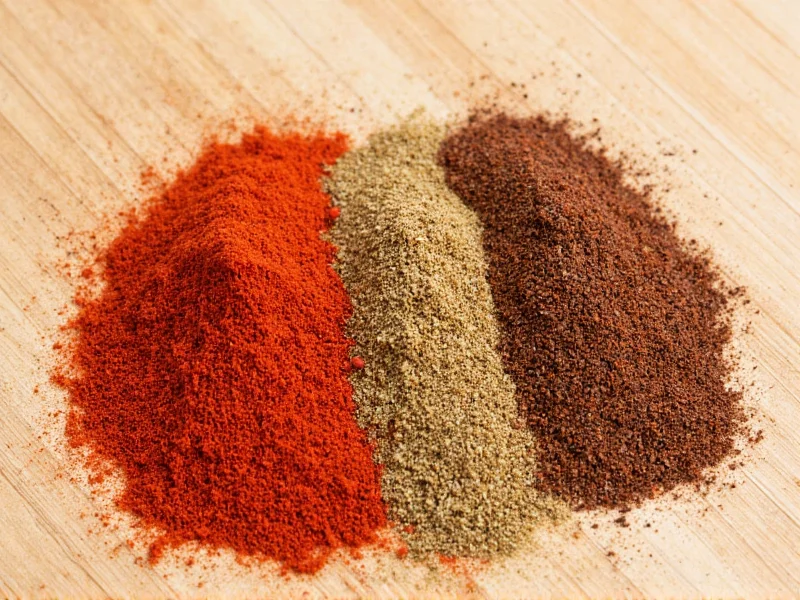Understanding the Science Behind Pepper Heat Measurement
Pepper spice level determination has evolved significantly since Scoville's original organoleptic testing method. Today, high-performance liquid chromatography (HPLC) provides precise measurements of capsaicinoids, the chemical compounds that create the burning sensation. These scientific measurements are then converted to Scoville Heat Units for consumer understanding.
Several factors influence a pepper's actual heat level beyond its genetic potential:
- Climate conditions during growth (hotter temperatures generally increase heat)
- Soil composition and nutrient availability
- Water stress on the plant
- Ripeness at harvest
- Specific part of the pepper (the placenta contains the highest concentration of capsaicin)
Comprehensive Pepper Spice Level Reference Chart
| Pepper Variety | Scoville Heat Units (SHU) | Heat Level Classification | Common Culinary Uses |
|---|---|---|---|
| Bell Pepper | 0 SHU | Mild | Raw in salads, stuffed peppers, stir-fries |
| Pepperoncini | 100-500 SHU | Mild | Pickled vegetables, Greek salads, sandwiches |
| Jalapeño | 2,500-8,000 SHU | Medium | Salsas, nachos, poppers, pickled jalapeños |
| Serrano | 10,000-23,000 SHU | Hot | Pico de gallo, hot sauces, guacamole |
| Habanero | 100,000-350,000 SHU | Very Hot | Caribbean cuisine, hot sauces, marinades |
| Ghost Pepper (Bhut Jolokia) | 800,000-1,041,427 SHU | Extremely Hot | Competitive eating, extreme hot sauces |
| Carolina Reaper | 1,400,000-2,200,000 SHU | Super Hot | Challenge peppers, specialty hot sauces |
Practical Applications for Home Cooks and Food Enthusiasts
Understanding pepper spice levels helps you make informed choices in the kitchen. When following recipes that specify particular peppers, knowing their heat range prevents unpleasant surprises. For those sensitive to spice, substituting milder varieties while maintaining flavor profiles becomes possible.
Consider these practical tips when working with different pepper spice levels:
- Always wear gloves when handling extremely hot peppers like ghost peppers or Carolina Reapers
- Remove seeds and white membranes to reduce heat intensity by up to 80%
- Balance extreme heat with dairy products (milk, yogurt) or acidic ingredients (lime juice)
- Start with smaller amounts of hot peppers and gradually increase to desired heat level
- Understand that dried peppers often concentrate heat compared to their fresh counterparts
Common Misconceptions About Pepper Heat Levels
Many people believe that smaller peppers are always hotter, but size alone doesn't determine heat. The specific variety matters more than physical characteristics. Additionally, color doesn't reliably indicate heat level—some red jalapeños can be milder than green ones, depending on growing conditions.
Another widespread misconception is that drinking water effectively cools your mouth after eating hot peppers. Water actually spreads the capsaicin oil, while dairy products containing casein protein provide more effective relief by binding to the capsaicin molecules.
Regional Variations in Pepper Spice Perception
Cultural background significantly influences how we perceive pepper spice levels. What might be considered "medium hot" in Thailand could be "extremely hot" to someone from Northern Europe. This subjective experience explains why many recipes include disclaimers about heat levels varying by region and personal tolerance.
When sharing recipes internationally, specifying both the pepper variety and its approximate Scoville range helps prevent confusion. For example, stating "use a pepper with 30,000-50,000 SHU" provides clearer guidance than simply saying "use a hot pepper."
Measuring Your Own Pepper's Heat Level
While professional Scoville testing requires laboratory equipment, home gardeners can conduct informal comparative tests. Create a simple dilution test by blending equal parts pepper and sugar-water, then gradually increasing the water ratio until the heat becomes undetectable. Though not scientifically precise, this method provides relative comparisons between your homegrown varieties.
Remember that even within the same pepper variety, individual fruits can vary significantly in heat. Factors like inconsistent watering, soil nutrients, and sun exposure all contribute to this natural variation.
Frequently Asked Questions
What pepper has the highest spice level on the Scoville scale?
The Carolina Reaper currently holds the Guinness World Record for hottest pepper, with Scoville ratings between 1.4 million and 2.2 million SHU. However, newer experimental hybrids like the Pepper X and Dragon's Breath have reportedly exceeded these levels, though without official certification.
How can I reduce the spice level of a dish that's too hot?
To reduce excessive heat in a dish, add dairy products like yogurt or sour cream, which contain casein that binds to capsaicin. Acidic ingredients like lime juice or vinegar can also help balance heat. Adding more non-spicy ingredients to dilute the dish works well for soups and stews. Never use water, as it spreads the capsaicin rather than neutralizing it.
Why do some jalapeños taste much hotter than others?
Jalapeño heat variation occurs due to growing conditions. Stressors like inconsistent watering, temperature fluctuations, and soil nutrient levels significantly impact capsaicin production. Even within the same plant, individual peppers can vary in heat. Red jalapeños (fully ripe) often contain more capsaicin than green ones, but this isn't always the case as environmental factors play a larger role than ripeness alone.
Does cooking affect pepper spice level?
Cooking can both concentrate and dissipate heat depending on the method. Roasting or grilling can intensify heat by concentrating capsaicin, while boiling or simmering may reduce heat as capsaicin dissolves into the cooking liquid. Frying often preserves heat levels. Interestingly, adding acid (like vinegar) during cooking can increase perceived heat by making capsaicin more soluble.
What's the difference between Scoville units and SHU?
There is no difference—Scoville units and SHU (Scoville Heat Units) refer to the same measurement system. The Scoville scale measures the concentration of capsaicinoids in a pepper, with higher numbers indicating greater heat intensity. The term SHU is simply the abbreviated form commonly used in culinary and scientific contexts when discussing pepper spice levels.











 浙公网安备
33010002000092号
浙公网安备
33010002000092号 浙B2-20120091-4
浙B2-20120091-4